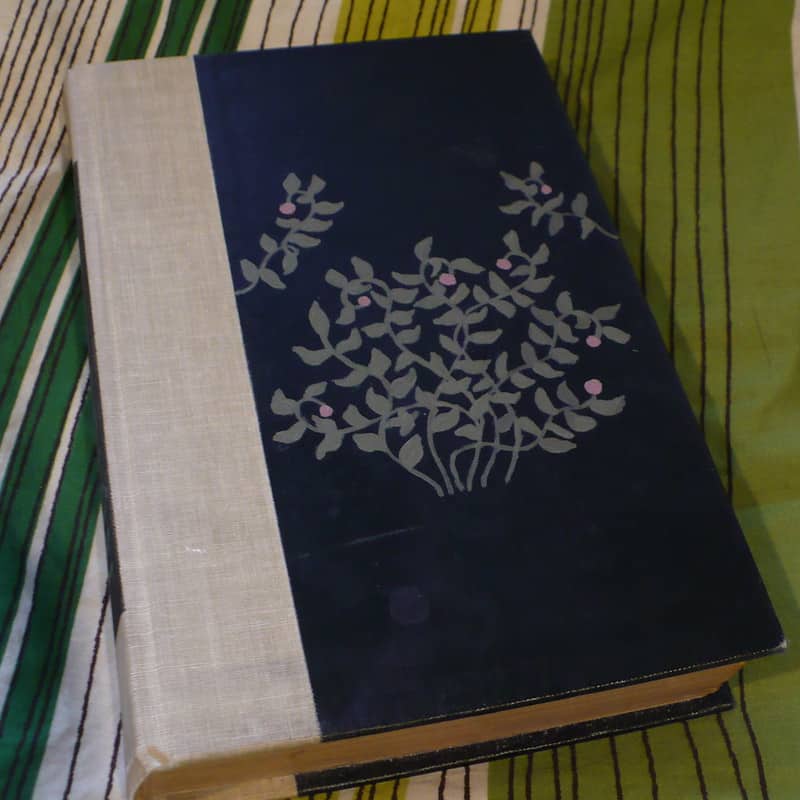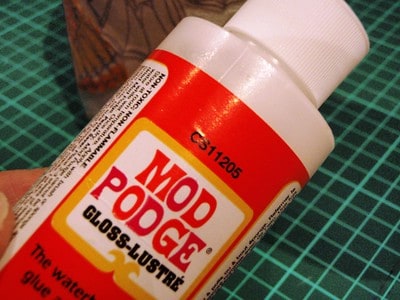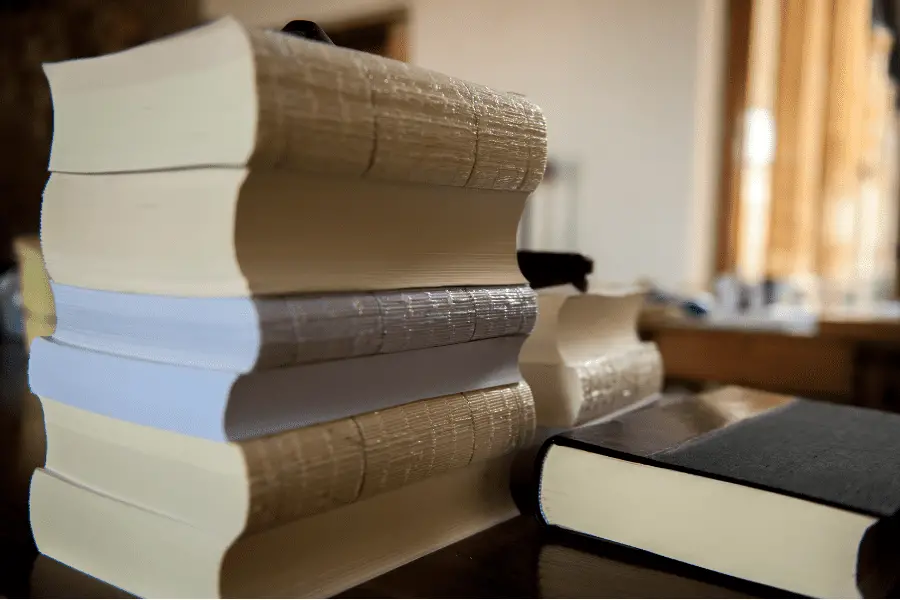Mod Podge is a helpful tool for any crafter and artist at home. You can apply it like paint, and the medium seals your work. It’s great for protecting your projects or making a decoupage, but can you use it for bookbinding?
Yes, you can use Mod Podge for bookbinding projects. It works great to secure your pages and fabrics in place. Plus, you can use clear Mod Podge during decorating to give your books a unique style. There are plenty of ways this sealant can be helpful when making books.
So, Mod Podge is a great tool when you’re bookbinding! You’ll want to know more about Mod Podge, how this adhesive works, and when you should use it on your books. Everything is below, so let’s keep reading!
What Is Mod Podge and How Is It Used?

Mod Podge is technically a decoupage medium, although you can still use it for bookbinding. Decoupage is an art form where you decorate items with paper cutouts. Mod Podge is perfect for getting paper and fabric to stick together when making a book.
Mod Podge creates a seal on your art projects without hiding your designs. However, it also works as a finish for making charms, jewelry, and more. Mod Podge makes their sealer in many different formulas, so you have plenty of options, no matter what you want to make.
For example, there are dishwasher-safe and glow-in-the-dark Mod Podge formulas. These sealants have their uses, but the original clear formula is generally best for bookbinding. Fabric Mod Podge also works well when designing your covers.

Overall, Mod Podge is a sealant that you use to finish your art. It creates a durable seal that also works incredibly well as glue.
Mod Podge as a Bookbinding Adhesive

Mod Podge works well as a bookbinding adhesive because the company makes it with paper crafts in mind. It’s beneficial when you want to attach a decorative fabric to the cover of your books.
Mod Podge even offers plenty of decoupage tools that you can use to help the sealant stick better to the paper and fabric. They work well to remove trapped air, making your final project look better.
You should use the Mod Podge to seal the pages along the spine of your book, attach the fabric to the covers, and secure decorations on the covers. You can experiment with different Mod Podge finishes and see which looks the best on your covers.
For example, the original glossy formula will look very different from the matte one. You’ll want to consider how much gloss you want to show on the cover of your book before applying the Mod Podge and picking an appropriate formula.
Pros and Cons of Using Mod Podge for Bookbinding

Before you purchase a bottle, you’ll want to consider all the pros and cons of using Mod Podge for bookbinding. First, let’s cover the pros:
- Mod Podge is cost-efficient and available everywhere
- It works well with paper and fabrics
- There are many formulas and finishes to choose from
- It’s straightforward to use
Next, the cons:
- You won’t get professional results unless you use a professional bookbinding glue
- Mod Podge can turn yellow and wear out over time
Overall, Mod Podge is perfect for bookbinding crafts. However, you may want to choose another type of adhesive if you’re making professional-quality books. Many bookbinders use rubber cement or various kinds of PVA glues. Still, Mod Podge should be perfect for our bookbinding purposes!
Step-by-Step Guide to Using Mod Podge for Bookbinding

You’ll want to know how to use the Mod Podge effectively on your books. At this stage, you should already have your book’s signatures sewed together and are preparing to work on the cover. Here are the steps to secure the pages in the spine:
- Apply Mod Podge along the spine of the book.
- Keep pressure on the book until the Mod Podge dries. You want to give it as much time as possible before moving on.
- You can add another thin layer of Mod Podge after the first dries.
Next, you’ll want to use Mod Podge to connect the cardboard covers and decorative fabric. Here’s what you can do:
- Cut three pieces of noncorrugated cardboard out. Two pieces should be the same size as your pages, while the final one is the size of the book’s spine.
- Apply your Mod Podge to the cardboard covers. You don’t want to use too much, and it should be an even layer. Make sure to lay them out so they align correctly with your book, so you can easily turn the pages.
- Give the Mod Podge a few moments to become tacky.
- Press the fabric onto the cardboard cover and smooth it using a decoupage tool. You want to remove any trapped air bubbles before the Mod Podge sets.
- Allow the cover to dry for at least 20 minutes.
- Cut the fabric diagonally on the corners of the cardboard so you can fold it in.
- Apply a light layer of Mod Podge to the fabric you want to fold and press it tightly to the cardboard. Ensure the book stays open to the Mod Podge and doesn’t stick to your pages. Repeat this with the other cover and wait 20 minutes again.
- Use Mod Podge to apply decorative paper inside the covers to hide the cardboard.
- Wait for it to dry.
Alternatives to Using Mod Podge for Bookbinding

Many bookbinders don’t use Mod Podge for bookbinding. Instead, they’ll use Standard or Jade PVA glues.
Standard and Jade PVA glues don’t contain any acids and have a neutral pH, which is better for the paper in the books. However, Jade PVA glue is much higher quality and is usually what professional bookbinders will use instead of Mod Podge.
You could also use rubber cement. Due to its sticky texture, many people find it a bit messier than Mod Podge, but it still works great for most bookbinding projects.
Final Thoughts
In short, you can use Mod Podge in your bookbinding projects. It works well to seal signatures together or hold decorative fabrics in place. Many people use it when designing their books since it has many uses.
Mod Podge can be an excellent, cost-efficient glue if you enjoy bookbinding. It’s cheaper than many other sealants, yet it still works well. There are many different Mod Podge formulas, so you can always choose one that works the best for your books.
Make sure to follow all my tips and recommended products to ensure your Mod Podge project turns out great! Also, don’t forget to check out my other articles for all your painting Q&A’s. Happy painting!


